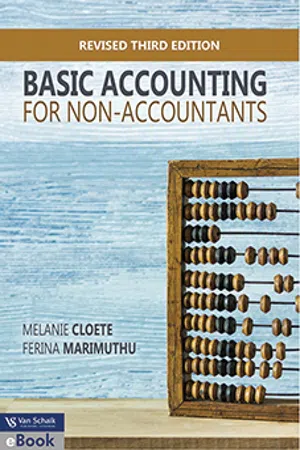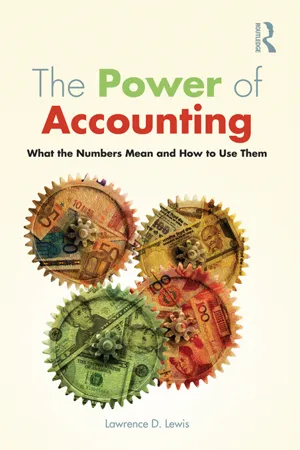Capital Budgeting
Capital budgeting refers to the process of evaluating and selecting long-term investment projects that involve significant financial outlays. It involves analyzing the potential returns and risks associated with these investments to determine their viability and impact on the company's overall financial performance. This process typically involves techniques such as net present value (NPV), internal rate of return (IRR), and payback period analysis.
7 Key excerpts on "Capital Budgeting"
- eBook - ePub
- Robert Irons(Author)
- 2019(Publication Date)
- Routledge(Publisher)
...7 Capital Budgeting Decision Methods Capital, in a business sense, refers to money, while a budget is basically a plan. So Capital Budgeting decision methods are the tools firms use to plan how they are going to invest money to grow their business. Each year firms construct a new budget for the following year—it is a long, involved process that rarely goes smoothly. The firm’s managers look for new ways for the firm to expand, whether it is new products and services, new production methods, new distribution venues or the like. They champion specific projects based on their analysis of the project’s potential impact on the firm’s profitability, and their annual bonuses are tied to the performance of their pet projects. Thus, the annual capital budget is the largest recurring project most firms experience. Skill in budgeting is a good way to climb the corporate ladder. The secret to growing a business is simple: invest in projects that earn more than they cost. If a project covers its own costs and the costs the firm pays its investors, any money left over can be used to invest in more projects and thereby fuel more growth. This chapter discusses the major methods used by firms to value potential investment projects, and a solid understanding of these methods is necessary to becoming a good financial analyst. We will discuss five major methods used for valuing investment projects: the payback period (PB) and discounted payback period (DPB), the net present value (NPV), the internal rate of return (IRR) and the modified internal rate of return (MIRR). Each of these methods will be shown using an Excel spreadsheet for the calculations. We will also review the method for determining the net operating cash flows for the projects based on the incremental cash flows associated with the project...
- eBook - ePub
- Jae K. Shim, Joel G. Siegel, Allison I. Shim(Authors)
- 2011(Publication Date)
- Wiley(Publisher)
...Chapter 20 Capital Budgeting Selecting the Optimum Long-Term Investment and Real Options Capital Budgeting relates to planning for the best selection and financing of long-term investment proposals. Capital Budgeting decisions are not equally essential to all companies. The relative importance of this function varies with company size, the nature of the industry, and the growth rate of the firm. As a business expands, problems regarding long-range investment proposals become more important. Strategic Capital Budgeting decisions can turn the tide for a company. The types of scarce resources that may be committed to a project include cash, time of key personnel, machine hours, and floor space in a factory. When estimating costs for a proposed project, the allocation of the company's scarce resources must be converted into terms of money. The two broad categories of Capital Budgeting decisions are screening decisions and preference decisions. Screening decisions relate to whether a proposed project satisfies some current acceptance standard. For instance, a company may have a policy of accepting cost reduction projects only if they provide a return of at least 15 percent. Preference decisions apply to selecting from competing courses of action. For example, a company may be looking at four different manufacturing machines to replace an existing one. The selection of the best machine is referred to as a preference decision. The basic types of investment decisions involve selections between proposed projects and replacement decisions. Selection requires judgments concerning future events of which one has no direct knowledge. One has to consider timing and risk. The task is to minimize chances of being wrong. To help deal with uncertainty, one may use the risk-return trade-off method...
- eBook - ePub
- Kalpesh Ashar, Vibrant Publishers(Authors)
- 2022(Publication Date)
- Vibrant Publishers(Publisher)
...Chapter 4 Capital Budgeting I n this chapter, we will look at how decisions can be made by using the cost of capital we saw in the previous chapter. The key learning objectives of this chapter are: ● Know how to estimate cash flows of any project ● Understand how to calculate and make decisions using techniques such as payback period, NPV, and IRR Investment decisions involving fixed assets are known as Capital Budgeting. These assets are of long-term nature and are expected to help the company to generate cash flows in the future. Decisions related to these assets are of utmost importance to companies in several ways. Firstly, due to the long-term nature of these assets, they will have an impact on the company’s cash flows for a long time in the future, generally ranging from a few years to several decades. Secondly, if the company does not make correct Capital Budgeting decisions, the competition could take away its market share and it could lose out or even be led to bankruptcy. Finally, due to the long-term nature of capital assets, the company needs to conduct a long-term forecast of demand. Too much deviation in the forecast could lead to unnecessary investment and the ensuing depreciation expense could bring the company’s net income down for several years. 4.1 Free Cash Flow When making Capital Budgeting decisions, companies use free cash flow to check whether the investment is worth it. Free cash flow is the cash that remains for distribution to all investors, stockholders, and debtors after the company has made all investments in fixed assets and in additional working capital needed to run its operations...
- eBook - ePub
- Cloete M, Marimuthu F(Authors)
- 2019(Publication Date)
- Van Schaik Publishers(Publisher)
...327 18 Capital Budgeting Outcomes At the end of this chapter, students should be able to describe the Capital Budgeting process explain the purpose of investment appraisal identify a project’s relevant cash flows analyse an investment project’s costs, benefits and risks calculate a project’s payback period, net present value, internal rate of return evaluate investment projects. Chapter outline 18.1 Introduction 18.2 Capital Budgeting process 18.3 Categories of Capital Budgeting projects 18.4 Why do organisations use investment appraisal? 18.5 Relevant and irrelevant cash flows in investment appraisal 18.6 Capital Budgeting techniques 18.6.1 Payback method 18.6.2 Accounting rate of return 18.6.3 Net present value 18.6.4 Profitability index 18.6.5 Internal rate of return 18.1 Introduction Organisations need to make important decisions regarding which long-term projects (fixed assets such as property, plant and equipment) they should undertake that will generate returns, and which they should reject. To arrive at such decisions, organisations use the Capital Budgeting process. A profit-making organisation will have to provide appropriate returns to those who have invested their money in it. To achieve that, the organisation will have to identify projects that are suitable and that can provide the organisation itself with such appropriate returns. The Capital Budgeting process involves maximisation of shareholder wealth. Therefore, in striving to maximise the wealth of shareholders, an organisation must bear in mind the needs of stakeholders other than shareholders, such as suppliers, employees, and the general public. 328 18.2 Capital Budgeting process Capital decisions are very costly, and therefore mistakes will involve very high costs if they are to be reversed. It is very important to plan well for capital investments...
- eBook - ePub
Hospitality Finance and Accounting
Essential Theory and Practice
- Rob Ginneken, Rob van Ginneken(Authors)
- 2019(Publication Date)
- Routledge(Publisher)
...Chapter 5 Capital Budgeting Planning for long-term asset expenditure Learning outcomes At the end of this chapter, readers should: understand the importance of ongoing capital investment in hospitality firms; differentiate between the accounting treatment of capital investment and repair and maintenance expenditure; understand the notion of the time value of money; be able to apply investment appraisal techniques. Theory James W. Hesford Michael J. Turner Introduction The purpose of this chapter is to give you the knowledge and tools to evaluate long-term capital investments. In addition to day-to-day operational decision-making, hospitality managers also engage in planning. They develop short- and long-term budgets, and frequently make decisions and/or recommendations for long-term capital investments. Capital Budgeting is the term used to describe the process of developing budgets for capital investment. Long-term capital investments establish a firm’s capabilities and frequently define the identity of a firm. The firm’s survival depends on the firm making the right decisions. Capital investments require large cash outlays and have a long-term impact on future profitability. Undertaking a “bad” project could lead to bankruptcy, whereas not undertaking a “good” project could make the firm less competitive, also threatening its long-term viability. Accordingly, hospitality managers must effectively plan for long-term capital investment. In every hospitality organisation there is an ongoing need to replace assets, assets that include furniture, fixtures and equipment (FF&E). Further, hospitality firms operate in highly uncertain and competitive environments, with demand fluctuating due to the economy, terrorist events, natural disasters and customers’ preferences. Competing in this environment, managers must think strategically about capital investment. For example, given a limited amount of funding, should the hotel expand by acquiring additional assets (e.g...
- eBook - ePub
The Power of Accounting
What the Numbers Mean and How to Use Them
- Lawrence Lewis(Author)
- 2012(Publication Date)
- Routledge(Publisher)
...This is true, but such a statement could lead one to the conclusion that there is only a short run and a long run and nothing in between. In reality, the budgeting process encompasses a continuum, as Figure 5.1 illustrates. Figure 5.1 Capital Budgeting Decisions Decisions relating to capital expenditures are not easily reversible. They generally involve large sums of money and long periods of time. So a poor decision of this sort is going to cost a lot of money and it is a decision you are going to have to live with for a long time. Not surprisingly, these are often thought to be among the most important decisions an organization can make. More than one organization has declared bankruptcy solely because someone or some committee made a poor Capital Budgeting decision. Take a trip through your local industrial district and note the shuttered factories and warehouses. In how many cases had someone miscalculated their firm’s future cash flows? Short-term decisions relate more to day-to-day operations, while Capital Budgeting involves strategic decisions that affect long-term goals. Capital Budgeting decisions may include decisions to buy or not to buy major pieces of equipment, to buy equipment from one manufacturer instead of another, to buy one machine versus a similar one, to introduce or not introduce a new product line, to expand overseas, to build a new plant and so on. Both short-term and long-term decisions should utilize incremental analysis. In our discussion in the previous chapter we stressed that when making short-term decisions we want to rely only on relevant information. And we defined relevant information as “expected future information that varies amongst alternatives.” The same approach and the same rules apply equally to long-term decisions...
- eBook - ePub
- Debi J Peverill(Author)
- 2018(Publication Date)
- Painless Financial Training Group Inc.(Publisher)
...Chapter 19. Capital Budgeting What is the difference between Capital Budgeting and regular budgeting? Capital Budgeting refers to the purchase of fixed assets such as equipment, vehicles, land, and buildings. This is the type of purchase that shows up on a balance sheet not on the income statements. Capital Budgeting is a little more complicated because it ends up affecting the income statement only through depreciation. Remember the discussion about assets—they are things you pay for that last for longer than a year and generally cost more than $500. Because these items last longer than a year, we attempt to spread the cost over a number of time periods. We do this through depreciation, which has already been discussed in this book. The regular kind of budgeting is actually called operational budgeting by stuck-up accountants everywhere. Most business owners do operational budgeting because it is the type of budgeting that helps you determine whether you need to increase sales or reduce expenditures. Capital Budgeting on the other hand is about deciding which capital items the business should purchase. This is an area where we often just do some math in our heads and then decide. Or it is an area where we do not make a financial decision. The decision about buying a car often has nothing to do with the financial aspects. We buy a car that we think is an expression of our personality or that will affect other people’s perception of us. Even though an older car may in fact work just as well as a new car, we are under the impression that if we buy a new car, people will think that we are doing better and they will be more likely to think we are successful and therefore should give us their business. We are going to talk about a couple of different methods used to make decisions...






